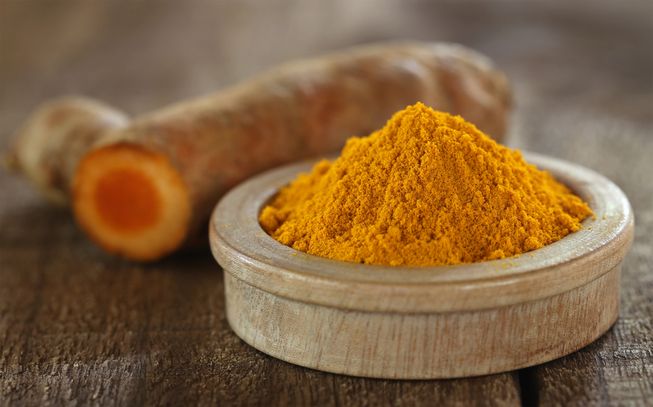
Advertisement
The culinary world is filled with fruits, vegetables and herbs that are not only tasty, but offer health benefits as well.
Such is the case with tulsi, the “Queen of the Herbs.”
Also known as Holy Basil, tulsi – or Ocimum tenuiflorum as it’s known to members of the scientific community – is native to the subtropical regions of the Indian subcontinent where it is revered as an avatar of the Lakshmi, the goddess of wealth and purity and the divine consort of the god Krishna.
With its strong aroma and spicy flavor, tulsi is commonly used in stir-fried dishes and curries. It’s also often steeped in water with black and green tea leaves, ginger and honey, to make a healthful tonic.
Due to its reputation as a sacred plant, most traditional homes and temples in India have at least one tulsi bush, sprigs of which are used in prayers to ensure personal health, spiritual purity, as well as the entire family’s well-being.
This extends into Ayurvedic medicine as well, which, for the past 5,000 years, has classified tulsi as a “rasayana” – an herb that has the ability to nourish a person’s growth, as well as lead him to perfect health, enlightenment and long life.
As of the present, two tulsi varieties are available, both of which are widely cultivated: Rama or Lakshmi Tulsi, which has white stems and green leaves; and the Shyam or Krishna Tulsi, which has dark purple and green stems and leaves.
Such is the potency of tulsi that, in a study published in the Journal of Ayurveda and Integrative Medicine, researchers noted that the use of tulsi in daily rituals is not only “a testament to Ayurvedic wisdom” but also, an example of ancient knowledge offering solutions to modern problems.
What makes tulsi so potent?
A nutrient-dense plant, tulsi is known to contain large amounts vitamins A, C and K, as well as minerals such as calcium, magnesium, phosphorus, iron and potassium. This is in addition to potent phytochemicals such as chlorophyll.
Aside from its vitamin and mineral stores, tulsi is best known for its impressive array of health-supporting bioactive compounds, including eugenol, carvacrol, ursolic acid and rosmarinic acid, as well as caryophyllene, oleanolic acid and several carotenoids. These compounds — especially in conjunction with other nutrients present in tulsi — have been linked to several health benefits, some of which are listed below:
Tulsi may help combat respiratory illnesses
According to the Natural Standard Herb & Supplement Guide, tulsi, when taken as a tea, may help relieve symptoms related to respiratory illnesses, such as asthma, bronchitis, colds, congestion, coughs, flu, sinusitis, sore throat, and similar ailments. As detailed by experts, this effect can be attributed to the camphene, cineole, and eugenol present in tulsi leaves.
PS: If you want to clear your sinuses, inhale the steam from a fresh cup of tea before you drink it.
Tulsi may help relieve pain and inflammations as well as reduce fever
Studies have shown that tulsi’s ability to bring down fevers is tied to its phytochemical content, which helps inhibit the release of prostaglandins in the body. Prostaglandins are compounds produced by the body that raises its temperature as well as limit its dissipation, usually as part of the body’s immune system response.
Eugenol, meanwhile, is a naturally-occurring terpene present in tulsi leaves. Known for its pain-relieving and anti-inflammatory properties, eugenol’s analgesic ability is said to be comparable to that of aspirin, making tulsi leaves a viable alternative to artificial pain relievers.
Tulsi may help promote optimal cardiovascular health
Researchers have found that the regular consumption of tulsi may help lower blood pressure and cholesterol by regulating cortisol levels, thereby reducing one’s risk of stroke, heart attack, and other related diseases.
In addition, tulsi contains the compounds Ocimumosides A and B, which help reduce stress, as well as balance the neurotransmitters serotonin and dopamine in the brain.
All in all, the consumption of tulsi has been shown to have a profound effect on the treatment and prevention of cardiovascular diseases and strokes by means of lowering blood lipid content and balancing one’s blood pressure levels — all of which are attributed to its high antioxidant content.
Tulsi may help manage blood sugar levels in diabetics
Based on a study by researchers at the Azad University of Agriculture and Technology in Kanpur, India, diabetic individuals who consumed tulsi leaves registered a significant decrease in their fasting and postprandial blood glucose levels. In the study, researchers noted that tulsi leaves may be prescribed as an adjunct to dietary therapy and drug treatment in mild to moderate Noninsulin-Dependent Diabetes Mellitus or NIDDM.
As with the other health benefits mentioned earlier, this was attributed to the tulsi plant’s antioxidant stores.
Tulsi may help promote optimal cognitive function
Another benefit of the antioxidant properties in tulsi is that it could help promote cognitive health.
A recent study has shown that adults who regularly took tulsi leaf extract for 15 days experienced improvements in their cognitive function compared to participants who were given a placebo.
The study’s authors, however, noted that more research is needed to confirm the results of their experiment.
How can I use tulsi?
Traditionally, tulsi is used as a tea, and is often steeped with other herbs and spices to make a potent tonic. It is also crushed and made into a paste, which is then used topically to treat skin infections and problems such as acne, ringworm and hives. It is also steeped in honey, which is then used as a remedy for indigestion.
Aside from that, tulsi is also considered to be a cherished ingredient in many Indian dishes, with the leaves often added to give a biting, peppery flavor to curries, stir-fries and other savory recipes.
Dried tulsi leaves are also used as a natural insect repellent, and are often placed in granaries, pantries and other storage areas in order to prevent insects and pests from spoiling food and other supplies.
A new way of using the herb, however, is as an additive in food products such as pasta.
Researchers have found that, when incorporated in pasta, tulsi leaves increased the food product’s nutritive value and that despite imparting a deep green color to the pasta, the finished product was still deemed “highly acceptable” with respect to its sensory attributes and cooking time.
According to the researchers, fortifying food products such as pasta with tulsi could result in the mass prevention of diseases and health problems.
Here are other ways with which you can use tulsi:
Fresh Tulsi Water
The traditional way of taking tulsi in its native India, this drink is a refreshing and healthful tonic that is guaranteed to revitalize you in the event of a mid-morning or a mid-afternoon slump.
PS: You can serve this over ice like a seltzer, or warm like a typical cup of tea.
Ingredients:
- Four to six sprigs of fresh tulsi
- One medium-sized organic lemon, sliced
- One quart of water
Directions:
- Lay out tulsi sprigs and leaves in a single layer on a clean dish towel or drying rack. Allow them to sit for one full day to wilt.
- Once the herb is wilted, heat water to 190 degrees F or just below boiling.
- Place the wilted tulsi in a quart canning jar. Pour the hot water over the herbs. Cover the jar with a lid or plate to capture the volatile oils.
- Steep at least 15 minutes.
- Strain if desired and drink, or cool further, pour over ice, and enjoy.
Tulsi Kashayam
A homemade remedy that’s normally prepared whenever someone feels under the weather, tulsi kashayam is a wholesome blend of tulsi, ginger, black pepper and raw sugar.
When served cold, it functions like a refreshing iced tea, and when served warm, it feels very much like a comforting hug – think of it as an Indian version of the traditional holiday favorite, mulled cider, but minus the alcohol.
Ingredients:
- Two cups water
- One cup tulsi leaves, wilted and torn
- 1/2 teaspoon organic black pepper powder
- 1/2 teaspoon dry ginger powder OR 1/2 teaspoon grated fresh organic ginger
- One teaspoon raw, organic, palm sugar
Directions:
- Pour water into a saucepan and wait for it to come to a boil.
- As soon as the water starts boiling, add the torn tulsi leaves.
- Once you see the color of the water change, add the black pepper powder, ginger powder, and palm sugar.
- Let the mixture boil for a few more minutes before turning off the heat.
- You can serve the drink hot as is, or you can wait for it to cool down, and serve it over ice.
Tulsi Tamatar Shorba
A filling and wholesome tomato-based traditional Indian soup, this is a velvety and rich dish that’s perfect for family dinners.
Ingredients:
- Four to five medium-sized organic tomatoes, chopped
- One teaspoon roasted cumin powder
- One small organic carrot, chopped
- Four cloves of organic garlic, crushed and finely chopped
- One small-sized organic Granny Smith apple, peeled and cut into cubes
- 50 grams organic coriander roots
- Pink Himalayan salt, according to taste
- ¾ teaspoon Kashmiri chili powder OR cayenne pepper
- Black pepper, to taste
- Organic, extra virgin olive oil to saute
- One teaspoon dried tulsi
Directions:
- In a pan, heat oil and add chopped garlic. Stir until garlic softens and becomes aromatic.
- Once the garlic’s edges turn golden, add the chopped tomatoes, carrot, apple, salt and Kashmiri chili powder.
- Add water and cook the mixture for 45 minutes or until the vegetables get tender.
- Once the vegetables become tender, mash them using the back of a wooden spoon.
- Add the chopped coriander roots with pepper and cook for another two minutes.
- Blend the mixture using a handheld immersion blender. At this point, you can strain the soup if so desired.
- Heat the soup again, add tulsi and adjust the salt according to your taste.
- Spoon into individual bowls and enjoy while hot.
A sacred plant that’s worshiped in its native land for its purported mystical properties and origins, the holy basil or tulsi isn’t just a tasty herb that’s sure to elevate your dishes – it’s also filled with essential nutrients and potent phytochemicals, all of which are guaranteed to help you on your way to optimal health and wellness.
Sources include:
Advertisements







